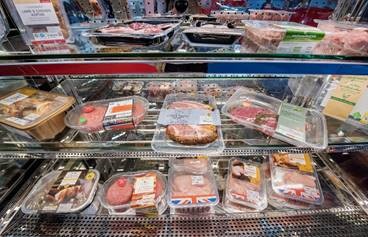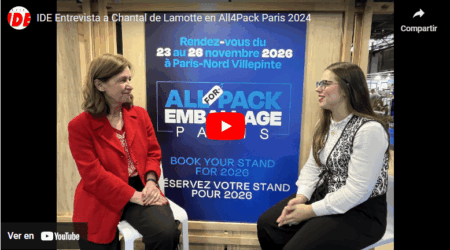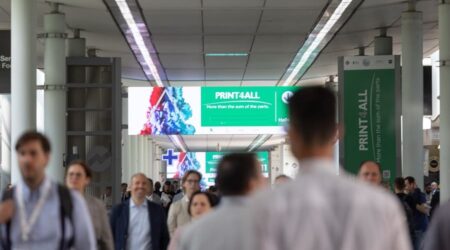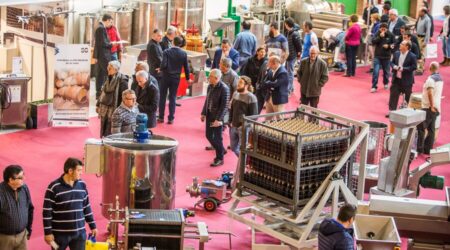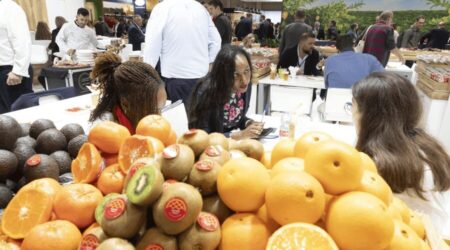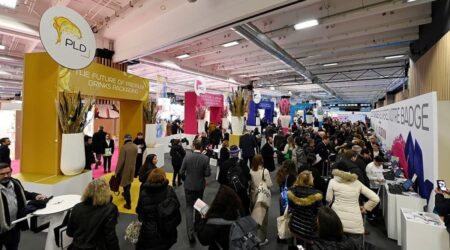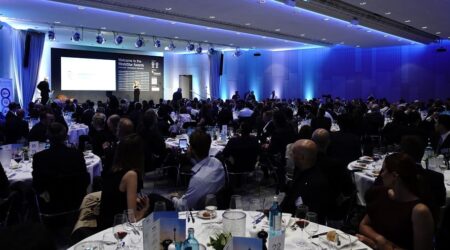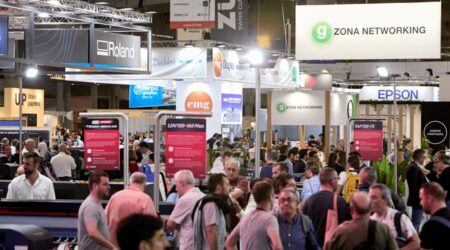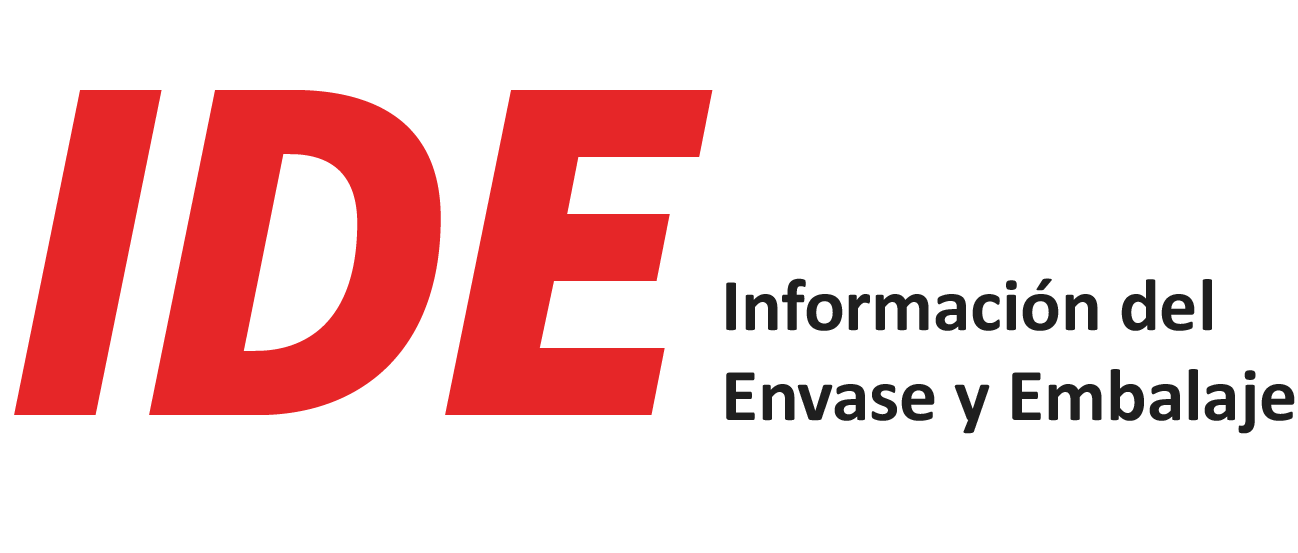IFFA: Innovative Packing is eco-friendly, safe and durable
Food packaging, especially for sensitive products made from meat or alternative proteins, must meet a wide range of requirements. Product protection and shelf life are paramount. Changing consumer behavior has contributed to a focus on sustainable and environmentally friendly products in packaging as well. Additional pressure is exerted by increasingly stringent legal requirements. Innovations are therefore aimed at reducing material use, recyclability and packaging made from renewable raw materials. These can be seen at IFFA from May 14 to 19, 2022 in Frankfurt am Main.
Not only in the packaging sector, but especially there, the issue of sustainability is very important to consumers. A study conducted by the consumer research company Nielsen in 2020 showed that 71 percent of German consumers prefer packaging that uses less material1. A similar conclusion was reached in a November 2021 study by packaging manufacturer Amcor, which surveyed 12,000 consumers from the United States, the United Kingdom, Germany, Australia, China and Brazil. Seventy-six percent said they want to recycle more and that recyclability is the most important sustainability feature for packaging2. Conclusion: «Manufacturers who reduce packaging or make it recyclable can
score points with customers,» according to the market researchers at Nielsen3.
Legal foundations
The legal basis for handling transport and sales packaging in the EU is the European Packaging Directive (EU Directive 94/62/EC)4, in conjunction with the European Commission’s Plastics Strategy5. The basic idea of the Packaging Directive is the circular economy. Waste should be reused or recycled if it cannot be avoided. According to the Plastics Strategy, all plastic packaging placed on the market in the EU should be recyclable or reusable by 2030. The requirements from Brussels are implemented in national law by the German Packaging Act (Verpackungsgesetz-VerpackG)6. According to this, the recycling quotas for all packaging materials will be tightened step by step by 2030. As far as plastic is concerned, half of the material used must be recyclable by 2025. A registration obligation is intended to prevent environmentally harmful packaging from
entering the German market in the first place.
Requirements for the packaging of the future
Driven by consumer expectations and legal requirements, manufacturers, often in conjunction with research institutes and even competitors, are working flat out on forwardlooking packaging for meat, sausage & co. It should be sustainable and resource-saving, generate less waste and at the same time meet the highest standards in terms of safety, shelf life and quality. Ideally, this packaging is recyclable or biodegradable and can be fed into a closed material cycle.
Traditional tray packaging still dominates store shelves – but it is increasingly being replaced by recyclable variants. Source: Messe Frankfurt
Chemical plastic recycling
Plastic films, consisting of several layers and different types of material, are the most common food packaging. With their good barrier characteristics, they protect against heat, moisture and oxygen – on the one hand. On the other hand, they damage the environment, have a poor CO₂ balance and are difficult or impossible to recycle, at least mechanically. Especially since, according to the EU directive, it must be ensured that no undesirable substances are contained in the recyclates. Chemical recycling offers a solution. In this process, the used plastics are converted into raw materials such as pyrolysis oil or synthesis gas. The recovered materials can then be used again for the production of films7.
Monomaterials
As an alternative to multilayer composites, research and industry are developing monomaterial packaging. According to the Packaging Act, they may have a maximum foreign material content of five percent. BarriFlex and CIRCULAR FoodPack are corresponding projects of the Fraunhofer Institute for Process Engineering and Packaging (IVV)8. Monomaterials consist of pure polyolefins (PP, PE, EVOH), have just as good a protective function as multilayer films, but are easier to sort and recycle. To achieve a barrier effect against oxygen and water vapor, nanoparticles are integrated into selected coatings and adhesives. The disadvantage is that the barrier function diminishes with increasing humidity and temperature9. The industry has already launched monomaterial packaging on the market. One example is a polyethylene (PE) shrink bag for fresh and processed meat and poultry. It has a PA/EVOH (polyamide/ethylene vinyl alcohol copolymer) barrier layer, the percentage of which is less than five percent and therefore has no impact on recycling. Also on the market is a barrier film that can be used to make casings for many meat or alternative protein products, based on recycled PE and PA. Also
fully recyclable is a thermoforming film made from PP (polypropylene)10.
Material savings
The easiest way to reduce the amount of plastic in packaging is to save material. Tubular bag films are gaining ground as a replacement for classic tray packaging. They are up to ten times thinner and lighter than conventional MAP (Modified Atmosphere Packaging) trays and therefore save up to 70 percent plastic per packaging unit. A tubular bag weighing ten grams is enough to transport one kilogram of minced meat. The bag then simply ends up in the yellow bag. The mono-material polypropylene is fully recyclable. Another advantage compared to conventional MAP trays: tubular bags have a much smaller pack volume, but thanks to their protective atmosphere they can be stacked just as easily. As a result, this means significantly better utilization of loading areas during truck transport and thus lower CO₂ emissions11.
Combination packaging
However, the innovative tubular bags do not mean the end of traditional tray packaging, where consumers have to peel a film off the supporting cardboard. Behind the term «Eco Bowl» is a fully recyclable corrugated tray with modified atmosphere (MAP) based on
corrugated cardboard. The 85 percent reduction in plastic content compared to conventional plastic trays is limited to the skin and top film12. Another model, «FoodTray,» consists of a cardboard tray made from renewable raw materials and two thin films made from recyclable plastic. The manufacturer thus reduces plastic consumption by around 80 percent13.
Biobased packaging
One promising research approach is biobased, i.e. biodegradable, packaging based on renewable raw materials. Fraunhofer is conducting research in the «Preserve» project on whey protein, which has similar barrier properties to EVOH or PVDC (polyvinylidene chloride) and is degradable in seawater. Experiments are also being conducted with sealable paper bags whose barrier layers consist of proteins and waxes. Here, too, the proteins serve as an oxygen barrier layer, and the waxes as a water vapor barrier. The antimicrobial effect of the bio-based additives prevents the packaged meat from spoiling
9 https://www.innoform-coaching.de/blog/2021/05/02/organische-und-anorganische-barriereschichten-unterscheiden-sichgrundlegend-
in-ihren-eigenschaften/
10 https://www.packreport.de/epaper/vpw/176/epaper/epaper.pdf
11 https://prozesstechnik.industrie.de/news-food/feneberg-verpackt-hackfleisch-im-nachhaltigen-schlauchbeutel/
https://www.packreport.de/epaper/vpw/176/epaper/epaper.pdf
12 https://multivac-group.com/de/news-events/news/detail/2020/06/1236-ds-smith-und-multivac-praesentieren-mit-eco-bowleine-
innovative-wellpapp-basierte-verpackungsloe/
13 https://www.gea.com/de/articles/foodtray/index.jsp
quickly14. Sugar cane, algae, fungi, or lactic acid are other raw materials suitable for the
development of biobased packaging. Corresponding packaging is already on the market.
One example is «Bio-SamPak,» a compostable film made from renewable cellulose, the
main component of plant cell walls. The packaging for sausage and cheese is said to
have the same hygiene and shelf-life standards as plastic15.
Smart Packaging
In the quest for greater sustainability and environmental compatibility of packaging, quality and product protection must not be left out. One research trend in this regard is smart packaging, which actively takes care of the meat product, protects it and thus also has a sustainable effect. Smart or «intelligent» packaging protects against light, regulates moisture development, keeps the temperature stable, absorbs unwanted ripening gases and prevents germ infestation – to name just a few applications. Researchers at the Fraunhofer IVV are also working on appropriate solutions in this area16.
IFFA: The latest generation of packaging machines
The development of sustainable innovative packaging and the corresponding machines for its production or for packaging food go hand in hand. Packaging manufacturers often have the matching machines for processing environmentally friendly materials such as paper and thin films in their product range at the same time. One of many examples is the «thermoformer» for producing the «FoodTray» packaging solution (see section on combipackaging) 17. Thus, the next generation of environmentally friendly packaging is about to be launched on the market. An overview of innovations in the field of packaging will be provided by exhibitors at IFFA – the leading international trade show Technology for Meat and Alternative Proteins, from May 14 to 19, 2022. Of the total of around 900 exhibitors, more than 160 companies will be presenting a comprehensive range of packaging machinery and equipment, as well as packaging materials and packaging aids. They can be found at a glance via the IFFA Contactor exhibitor and product search under the «Packaging Technology» product group. Leading suppliers include Digi, Frimaq, GEA, ILPRA, Ishida, Italianpack, Mondini, Multivac, Reepack, Sealpac, Supervac, Tavil, ULMA, Variovac, VC999 and Weber. With four trade fairs on four continents, Messe Frankfurt is accompanying the dynamic growth of the global food industry. For more information on the events in the «Food Technologies” sector go to: www.food-technologies.messefrankfurt.com


